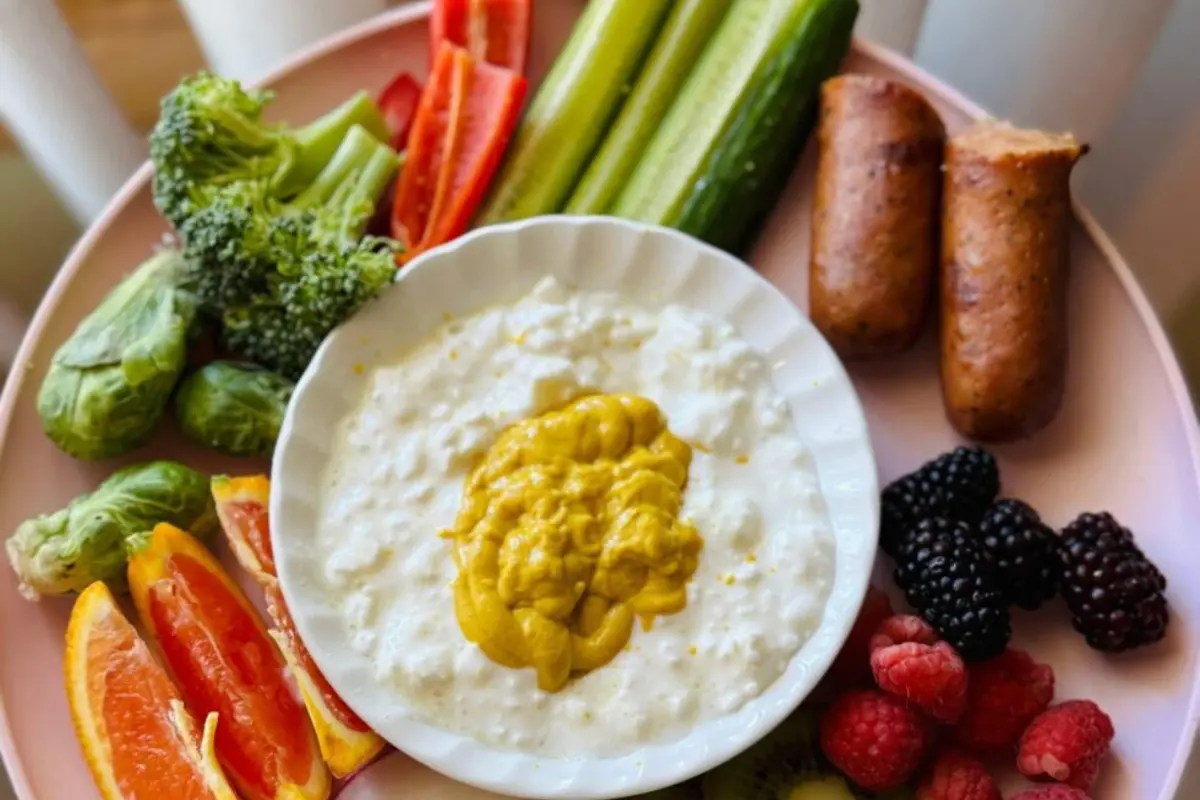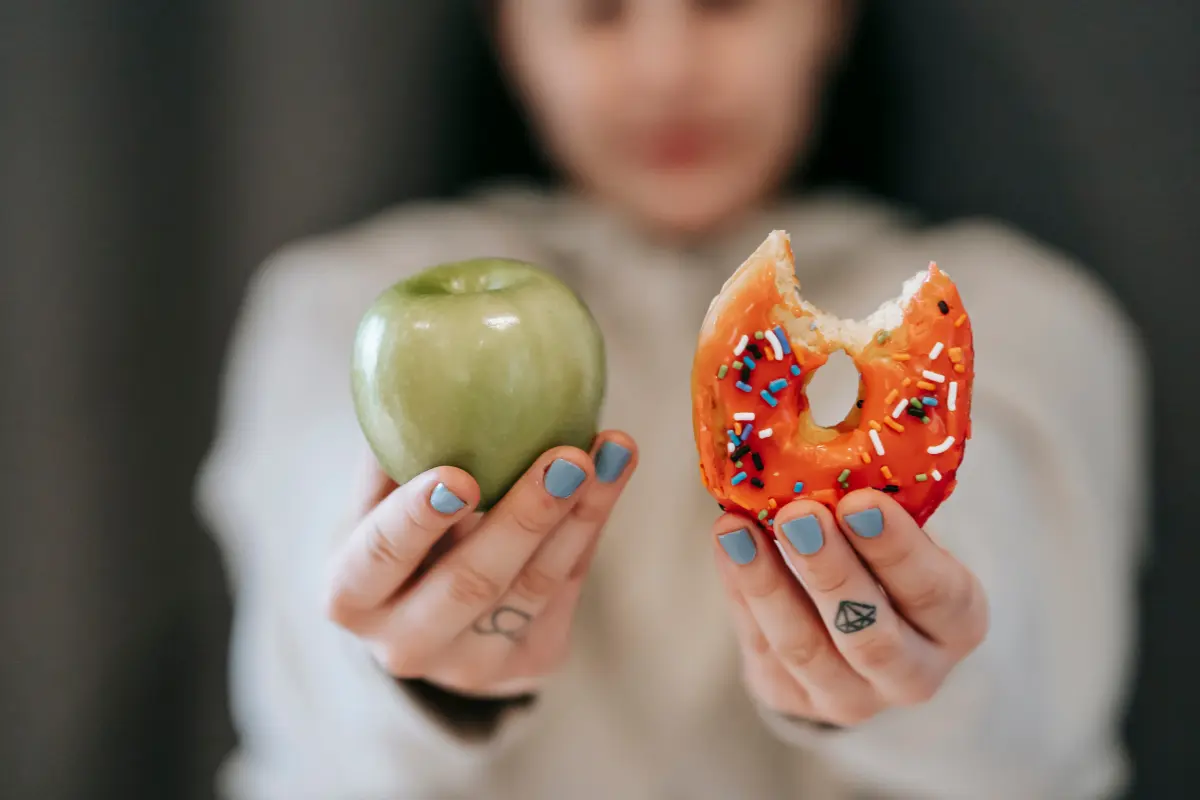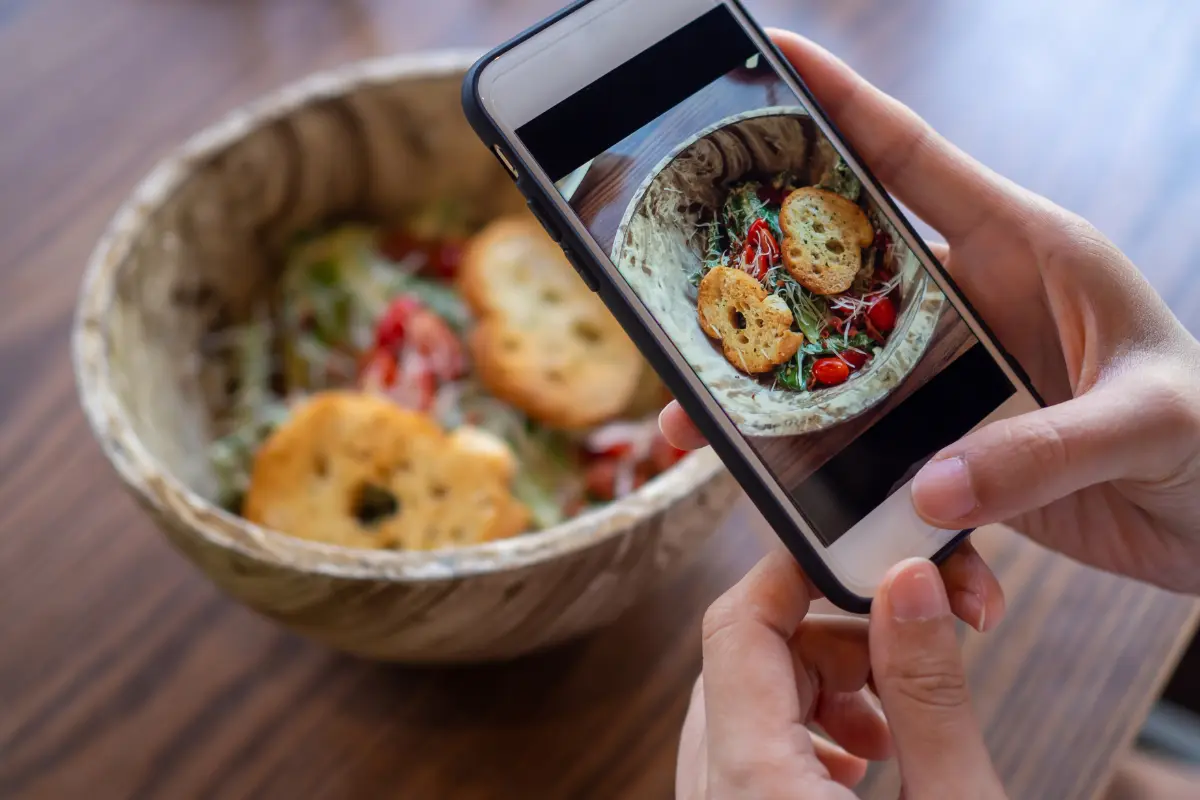
Social media is full of the latest nutrition trend, the “Tiffany Plate”. Colorful meals comprised of raw fruits and vegetables, chicken sausage, cottage cheese, and mustard. Creator Tiffany Magee’s concept is presented as nutritious, anti-inflammatory, and easy to prepare.
As a registered dietitian, I’m a fan of anything that gets people thinking about their nutrition in a positive and sustainable way. These trends can be super useful to bring awareness and spark ideas for our personal nutrition. Social media is a wonderful platform to share ideas. The danger comes when we aim to emulate exactly what the influencer is eating. I encourage clients to learn from what other people are doing and see how it can be adapted into their own personal, well-balanced nutrition.
Let’s break this trend down and highlight potential ways to tweak it so it fits your goals.
What the Tiffany Plate Gets Right:
Veggies and Fruits are Front and Center! One of the biggest benefits of this trend is the emphasis on whole foods. Fresh produce is included in every plate, providing fiber, vitamins, and minerals. These are foods many of us don’t get enough of, and this style of eating makes fresh food more approachable.
Built-in Protein for Satiety. The combination of chicken sausage and cottage cheese gives this plate a protein boost. Most of us are lacking in protein, and we have to be intentional about getting enough each day. Carbs and fats are everywhere, but protein can be challenging. Having adequate protein in your plan (about .8-1.0grams of protein per pound of ideal weight) helps to stabilize blood sugar, decrease cravings, and support muscle repair. This way of eating can be super helpful for those who rely on grab-and-go items.
Advertisement
It’s easy! A large part of the appeal of the Tiffany Plate is how easy it is to prepare. For most of us, there is something motivating about having a nutrient-dense, colorful plate that requires little to no prep work.
Promotes Mindful Eating. This style of eating requires a slower pace of eating, allowing you to savor and enjoy your meal. Since the plates are comprised of various foods with unique flavors, we tend to eat more intentionally as we work our way through the meal. This is a great habit as it promotes awareness and allows recognition of hunger cues.
What It’s Missing
There are lots of positives to the Tiffany Plate trend. It’s not a perfect meal for everyone. There are always risks when a trend leans heavily on a “magic solution” or “perfect meal”.
Sodium and Saturated Fats. Chicken sausage is a good source of protein and often much lower in saturated fats compared to pork or beef options. Depending on the brand, chicken sausage can contain high amounts of sodium and saturated fats. Excesses of both saturated fats and sodium can lead to inflammation, especially in those with a history of certain medical conditions like hypertension or cardiovascular disease.
Missing Nutrients. For most varriations of the Tiffany Plate there is a lack of complex carbohydrates, which help with sustained energy espically for those who are active. The overall calories may also be too low for those who have higher energy needs like athletes or those recovering from injury or illness.
Advertisement
Inflated Anti-Inflammatory Claims. Whole foods like fruits, veggies, and healthy fats may help reduce inflammation; however, labeling The Tiffany Plate as anti-inflammatory is a huge stretch. Nutrition is one small piece of the inflammatory puzzle. Sleep, stress, overall consumption of nutrients, genetics, and activity all contribute to our inflammatory response.
Unrealistic Expectations. Social media tends to fixate on quick fixes and challenges versus a sustainable, healthy relationship with food. Rhetoric such as “15 days of Tiffany Plates” can lead to unrealistic expectations and eventual letdown. It’s always important to remember that there is no single plate or food that will cure chronic illness.
How to Make it Work For You
If you like the Tiffany Plate idea and would like to give it a try, here are a few ways to tweak the components so your meal supports long-term health and goals.
Protein: Aim for lower-sodium sausages or rotate your protein choices by adding grilled chicken, fish, or legumes.
Veggies and Fruits: Keep them varied. Aim to add in cruciferous veggies, leafy greens, and colorful fruits.
Advertisement
Healthy Fats: Add in foods like nuts, seeds, avocado, or olives to provide essential healthy fats.
Carbohydrates: Add a source of complex carbohydrates when needed. Whole grain bread or crackers, cooked sweet potato, or brown rice. This is especially important for those who are active.
Portions: Use this plate method as a meal or light snack and tailor portions to your unique needs and goals. What you see online is likely not your desired portions!
Bottom Line
The Tiffany Plate offers a lot of positives, and compared to most other social media diet trends, it’s one of the good ones. It’s approachable, looks great, veggie-heavy, and has adequate protein. The framework allows you to put together a nutritious meal without a lot of complicated steps.
If you use this way of eating as one of your many tools in the nutrition toolbox, it can provide the nutrients and fill the gaps from your other meals. Like most trends, the power and results come from overall nutrition, sustainability, and consistency.
Advertisement
If you’re interested in finding out if a Tiffany Plate style of eating could work for you, our team of nutrition professionals is here to help!
Schedule a Free Intro Call
Working Against Gravity has led the macro tracking and health space for over a decade. Our team doesn’t just understand the science of nutrition—we’ve spent years mastering the art of tailoring it to fit your life. That means no cookie-cutter plans, just real strategies that have worked for over 30,000 people.
Schedule a free call with our team to learn how working with a 1-on-1 WAG coach will help you reach your goals.



